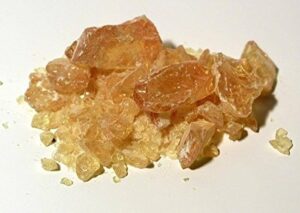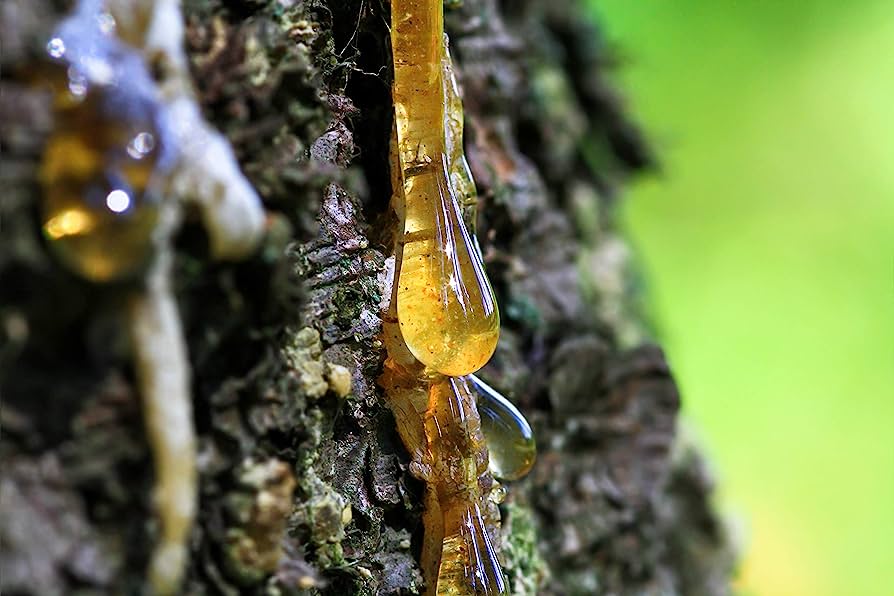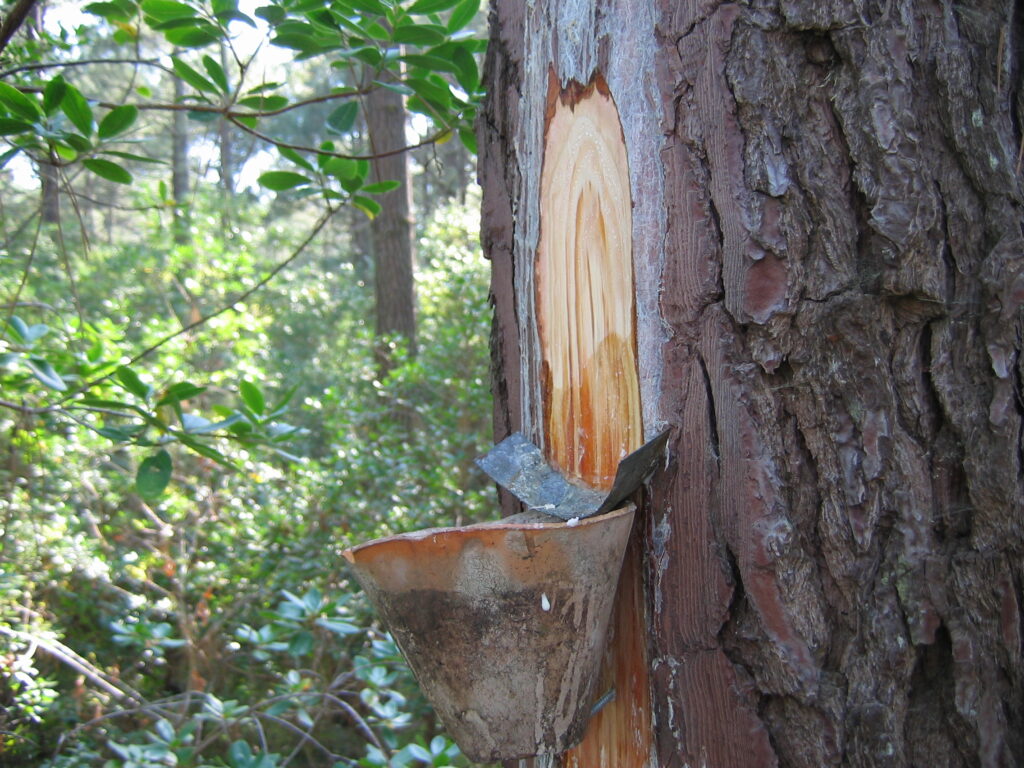Pine sap is a viscous substance originating from pine trees. Its Constituents are water, nutrients and high sugar content. This liquid flows through the trunks’ xylem and phloem tubes. As the leaves of the tree conduct photosynthesis, they produce glucose with the help of the nutrients carried by the sap.
So, you might be curious, is pine resin edible? Yes, it is. It is a natural substance that carries nourishment, it is non-toxic.
When the sap of a pine tree is extracted and processed, it is called pine resin. You can find pine trees all over the world, including in Asia, Africa, Europe and America. It belongs to the Pinaceae family. There are many industrial and chemical uses for pine resin.
A suitable pine tree is chosen, and a side of it is cut to expose the tree’s sap ducts. Once the sap is collected over time, it is put in containers for processing. Keep on scrolling to find out more interesting facts about pine.
Is pine resin edible?

Pine tree sap is a natural fluid used by the tree to move nutrients. It is totally harmless to the human body. Therefore, pine resin is edible. However, it contains turpentine and tastes horrible.
Pine resin can be chewed like a piece of gum. In fact, it is often chewed for its anti-bacterial properties and its ability to relieve joint pain.
However, boiled pine sap, commonly called Stockholm tar, is somewhat toxic and will cause problems to your digestive system. You cannot eat boiled pine sap without getting sick. There is also a type of pine tree Whose needles and tips are toxic to humans. It is called the ponderosa pine tree. These toxic types are recognized by Their Rusty orange barks.
What is pine resin used for?

Pine resin can be used in many, many ways. Its raw form can be used as a sealant, glue etc. Here is a list of uses of pine resin.
First Aid
Suppose you are camping outdoors and you are injured somehow with no first aid nearby. In this situation, pine resin can help you. You can apply it directly over your wounds to inhibit blood loss. Pine resin has anti-bacterial properties too, so applying it to your injuries will also prevent infection. You can easily peel it off after it has dried.
Waterproofing Items
Pine resin can be used as a waterproof coating. You need to heat the resin, though. Apply the heated liquid resin to the object you want to waterproof.
As a Sealant
Liquid pine resin can be used to seal holes and cracks. Structures, boats and other things with holes can be repaired this way.
Source of Light and Heat
Pine resin can be burned to generate heat and light. It can burn like a candle. In the wilderness, if you are facing a severe cold, you can use it to heat your hands and feet.
As a Glue or Adhesive
Pine resin can be used to join things together. For this, pine resin is brought to liquid form, and fine charcoal is mixed with them. After adequate heating and stirring, a makeshift glue is formed.
Soothing a sore throat
Whether you are feeling pain from a sore throat from a cold or any other illness, you can eat a little amount of pine tree sap. The sap directly taken from the tree is edible. This will soothe your throat.
As a remedy for rashes
If you have an itch on your skin or rashes, pine resin can come to the rescue. Pine sap, mixed with little amounts of oil and fire ash, can act as a natural remedy for rashes.
Industrial uses
Pine resin is used in the process of making soaps, waxes, varnish, polyethylene, putty, printing inks, polishes, pine oil, linoleum, grease, drive belts, asphalt, paper, paints, adhesives etc. It is also used in the process of turpentine distillation.
Can you survive off of pine sap?
Anything can go wrong in the wilderness. If you find that you are lost in the wilderness with no food, pine trees can help you.
You can eat pine sap directly from the tree, and you can survive on this.
Trees carry nutrients using sap. So the tree sap is a lifesaver if you’re in a situation where you might starve to death. No, it will not taste like fresh trout. But you can gain the necessary nutrients and sustenance to keep yourself alive in this situation, especially if you are suffering from late-stage starvation.
Pine trees are not only beautiful but also a wonderful source of vitamins. Because of its vitamin-rich nature, pine sap also helps prevent scurvy.
Is pine resin toxic?
Pine resin is non-toxic and completely safe for your body.
However, ingesting boiled pine sap will likely cause harm to your digestive tract. Otherwise, raw pine sap is edible and provides nutrition. Pine resin is also edible, and some people chew it like gum for its anti-bacterial properties. A minority of people might be allergic to pine resin. Still, it wouldn’t be fatal to them if they ingested it.
How is pine resin harvested?

Harvesting pine sap is a rather straightforward process. First, a suitable tree is chosen. Then a cut is made three feet above the ground. The bark is removed from a ten-inch wide space.
A bucket is attached to the tree for the purpose of collecting the sap. Once enough sap is collected, all foreign objects like nails or metal fasteners are removed from the tree. This encourages the repair of the bark. So the tree will be healthy again.
Final thoughts
Pine resin is safe for the human body and edible. So next time you come across pine resin, you need not worry about its toxicity. It is used in various medicinal purposes as well as industrial purposes. It is a common ingredient in lipsticks, mascaras, and foundations.
It is used in the making of ulcer bandages and dental cement. Pine resin is used in formulas of remedies for various illnesses such as muscle aches, respiratory infections, coughs, bronchitis, asthma, and urinary tract infections.
Now you also know the many life-saving uses of pine resin in the wild. So if you ever get lost in the wilderness, and there happens to be a few pine trees nearby, you can use this knowledge to save yourself from starving to death.